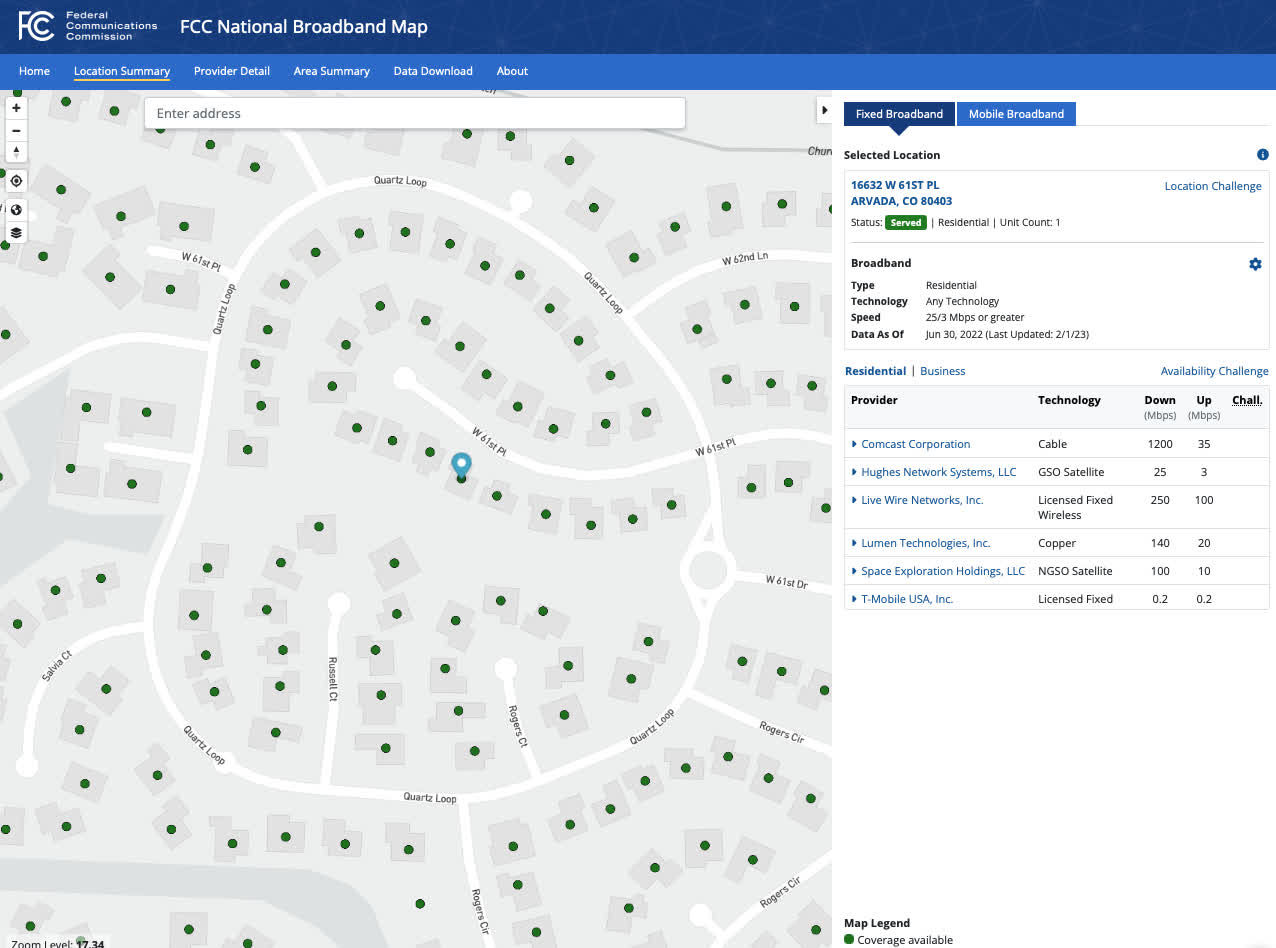[ad_1]
Big quote: “[Comcast] chose to contest the challenge before doing a serious investigation into the validity of the challenge. Anyone can make a mistake, but to opt to defend that mistake rather than correct it is a deliberate choice that flows from the fact that there is everything to gain and nothing to lose from sticking by an inflated claim.” — Harold Feld, senior VP of consumer-advocacy group Public Knowledge.
Last week, a small-town broadband provider admitted to lying to the FCC about its coverage map specifically to prevent a competitor from getting a government grant to upgrade its service to the area. But it’s not just small providers lying to the Commission. This week, Comcast was caught submitting false coverage maps for several regions in Colorado.
Matthew Hillier, an engineer for 30 years for several telecom companies, told Ars Technica that he discovered that the FCC’s coverage map showed Comcast offered coverage at his address when that was not true. When he filed a challenge to the claim, Comcast doubled down, telling the FCC that it did offer service to that residence despite Hillier’s claim.
The FCC took no action other than telling Hillier he had 60 days to sort it out with Comcast. In the meantime, it changed his address on the map to “pending.” It did not even consider upholding the challenge after Hillier sent the Commission screenshots from Comcast’s website showing that his residence was not covered.
“I submitted proof from Comcast/Xfinity’s own systems that my address was not served by this provider despite being reported as such to you by Comcast/Xfinity… I expect more from a government body like the FCC [than] to just say ‘go sort it out and let us know how it turns out,'” he wrote to the FCC.
It wasn’t until Ars contacted the giant broadband provider’s public relations office that the company conceded Hillier’s challenge. But the fact that it contested his claim shows an effort to dominate the smaller companies that provide for those outlying communities.
Consumer advocacy organization Public Knowledge’s Vice President Harold Feld told Ars it’s a “one law for the rich and one for the poor” dynamic.
“Let a poor person fill out a form wrong for Lifeline or ACP [the FCC’s Affordable Connectivity Program], and we hear screams about waste, Congress holds hearings, Republicans rant, and Democrats scramble to show how tough they are on fraud. But when we see systemic abuse (or at minimum lax compliance) by carriers of FCC processes — crickets,” Feld argues.
“Anyone can make a mistake, but to opt to defend that mistake rather than correct it is a deliberate choice that flows from the fact that there is everything to gain and nothing to lose from sticking by an inflated claim.”
However, Hillier’s address was just one in the Arvada, Colorado Quartz Loop subdivision. There are dozens of residences in his neighborhood that are still listed as serviced by Comcast but aren’t. There are only two wired broadband providers in Hillier’s neighborhood — TDS and Lumen (CenturyLink).
Comcast’s deception doesn’t stop with Arvada. Ars poked around the FCC map and cross-referenced several addresses in the nearby Fort Collins and Golden, Colorado areas with Comcast’s online availability checker and found dozens of residences that read “invalid address,” meaning the company submitted a false coverage to the FCC in those towns as well.
Unlike the small independent Ohio company, Jefferson County Cable, that got caught cheating last week, Comcast is nationwide. These are just three regions in Colorado. It is unknown how many other areas in the US Comcast falsely claims to service. It’s also unknown how many other nationwide carriers are doing the same.
The FCC coverage map has more than a million contested addresses. Yet it’s impossible to know if that is even an accurate count because contesting a mistake is done address-to-address. There is no avenue for a small provider or community to argue that a carrier does not provide for an entire region or even a subdivision. Going about it one address at a time is like bailing a sinking boat with a spoon.
There are more than one million challenged claims to the FCC’s broadband map that still need resolution.
This issue is important because rural and lesser populated areas of the US have always been the last in line regarding communications. Many regions don’t even have a broadband internet provider and those that do usually top out with speeds lower than 50 Mbps. Hillier said his community is fortunate to get 60Mbps download and 5Mbps upload speeds from CenturyLink.
With the covid scare and so many people working from home, Congress finally saw this deficiency and tried to correct it by earmarking tens of billions of dollars to improve and expand broadband to lacking communities. It put the FCC in charge of determining who gets those funds.
The FCC then tasked the National Telecommunications and Information Administration (NTIA) to distribute grants to ISPs in need. The NTIA bases an ISP’s need on the data collected by the FCC and provided by major and minor carriers. These coverage maps are taken without vetting, so the FCC trusts providers to be honest, but that is not happening.
It is only now coming to light that many carriers are fudging their coverage maps to keep competitors from receiving these funds. What’s worse is that the NTIA’s deadline for contesting coverage ended on January 13 because it wants to start awarding grants by June 30. The only way to fairly distribute this tax-payer-funded project is to vet coverage areas submitted by companies more thoroughly. That means audits on an enormous scale, and that’s a big ask when it comes to government work.
[ad_2]
Source link
